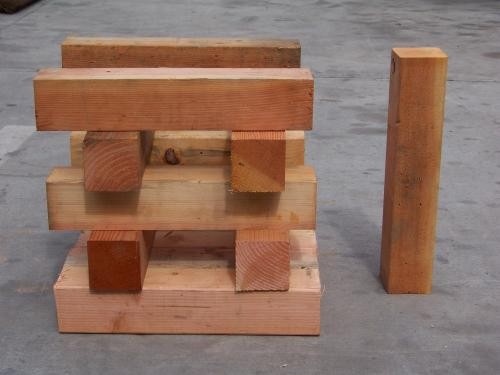Cribbing
Cribbing is a temporary wooden structure used to support heavy objects during construction, relocation, vehicle extrication and urban search and rescue.
The stability of a crib is affected by a variety of factors: the material used (often a soft wood which gives audible warnings before failure), the number of contact points between the crib andsupported the surface, the ratio of the footprint of the crib to its height, and the area of contact made between the crib and the ground and supported surface.
Cribbing is usually accomplished with blocks of wood, often 4″x4″ or 6″x6″ and 18″-24″ long. Soft woods, like spruce and pine are often preferred because they crack slowly and make loud noises before completely failing, whereas stiffer woods may fail explosively and without warning.
A box crib is the simplest, most stable and most common method of cribbing. It is constructed by arranging sets (2 or more) of matched blocks in a regular log-cabin style to form a rising square or rectangular frame. The more blocks on each level, the greater the number of support points and therefore the greater the strength of the crib tower.
Cribbing is often performed as part of lifting/lowering operations. Expressions such as “lift an inch, crib an inch” and “pack as you jack” are used to remind operators of the importance of cribbing to secure and protect the load.
The use of cribbing also allows for the use of a lifting device with a limited working range (such as a jack, lifting air bags or hydraulic rescue tools) as the load can be raised to the maximum range of the device, then lowered a short distance onto the cribbing, allowing another platform of cribbing to be built to raise the device and repeat the process.


